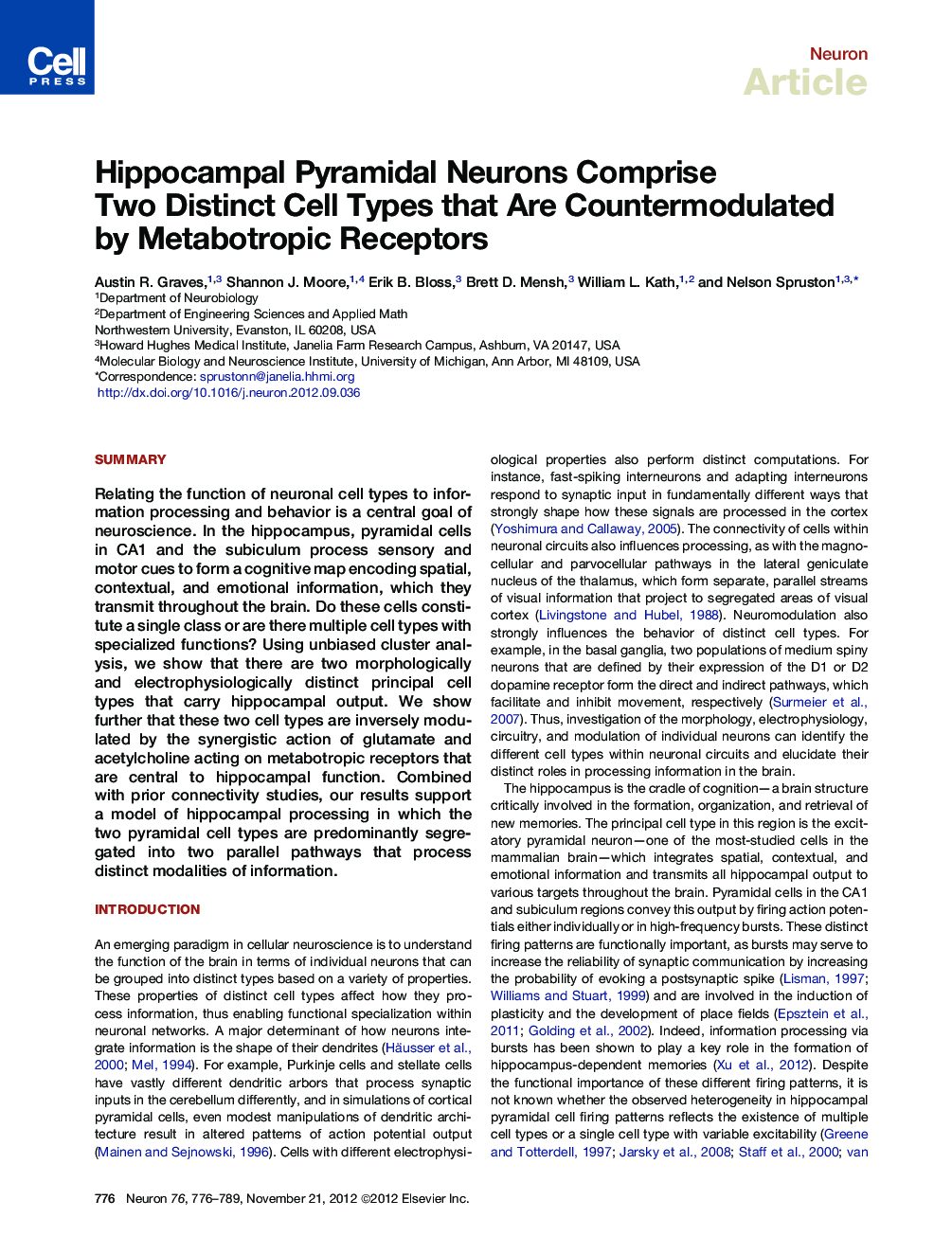| Article ID | Journal | Published Year | Pages | File Type |
|---|---|---|---|---|
| 4321261 | Neuron | 2012 | 14 Pages |
SummaryRelating the function of neuronal cell types to information processing and behavior is a central goal of neuroscience. In the hippocampus, pyramidal cells in CA1 and the subiculum process sensory and motor cues to form a cognitive map encoding spatial, contextual, and emotional information, which they transmit throughout the brain. Do these cells constitute a single class or are there multiple cell types with specialized functions? Using unbiased cluster analysis, we show that there are two morphologically and electrophysiologically distinct principal cell types that carry hippocampal output. We show further that these two cell types are inversely modulated by the synergistic action of glutamate and acetylcholine acting on metabotropic receptors that are central to hippocampal function. Combined with prior connectivity studies, our results support a model of hippocampal processing in which the two pyramidal cell types are predominantly segregated into two parallel pathways that process distinct modalities of information.
► Two morphologically and physiologically distinct hippocampal pyramidal cell types ► Glutamate and acetylcholine control output via each cell type ► Cell types exhibit differential plasticity: countermodulation by mGluRs and mAChRs ► Distinct cell types enable functional specialization of hippocampal output
